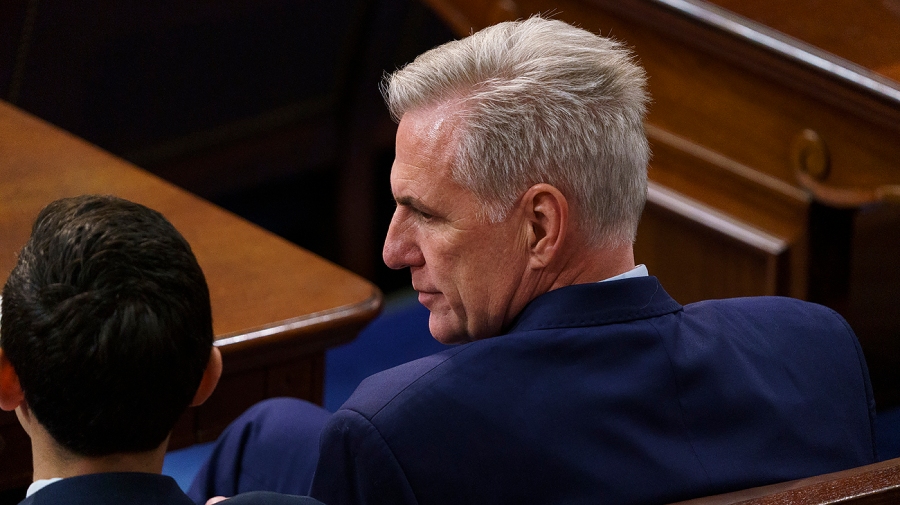Just In | The Hill
On the heels of a record-breaking year, SpaceX kicked off the new year with its first rocket launch and landing of 2023. If Elon Musk has his way, this would be the first of nearly 100 launches for the rocket company this year, setting the pace for an ambitious year for private space companies.
A sooty Falcon 9 booster leapt off its launch pad at Space Launch Complex-40 at Cape Canaveral Space Force Station at 9:56 a.m. EST on Tuesday, followed up by the rocket’s first stage returning to Earth just eight minutes later.
The flight, which was the 15th for this particular booster, ferried 114 small satellites into space as part of SpaceX’s 6th dedicated rideshare mission, called Transporter-6. Nearly an hour later, those passengers — a bevy of small satellites and small orbital transfer vehicles that carried satellites for a later deployment into different orbits — began to separate from the rocket’s upper stage.
The whole process, a complex orbital ballet of satellites shooting into space in perfect sequence, took more than half an hour to complete. The mission is the Hawthorne, Calif.-based company’s sixth dedicated rideshare mission to date, and SpaceX announced during the live broadcast that it plans to launch at least three of these missions this year. The company also plans to offer rideshare opportunities on its Starlink launches, which it says averages one a week.
Other companies are planning to join in the action. Rocket Lab, which is preparing to open a new U.S.-based launch pad at NASA’s Wallops Flight Facility in Virginia, also caters to smaller satellites — for researchers or companies that might not be able to ride on a traditional flight — and is predicting at least 14 launches for 2023.
Jeff Bezos’ rocket company, Blue Origin, suffered an inflight anomaly in 2022 which grounded its New Shepard rocket temporarily. However, new Federal Communications Commissions (FCC) filings indicate the company could be on track to return to flight early this year.
Still, those plans pale in comparison to the 100 launches that Musk boldly claimed SpaceX was aiming for in 2023.
While Musks’ predictions are often wildly optimistic, officials at the U.S. Space Force are preparing for as many as 87 launches from Cape Canaveral this year, according to Lt. Col. Colin Mims, who is the commander of the 1st Range Operations Squadron — the department that provides range safety support for all the launches out of the Florida site.
According to Mims, 2022 was a banner year for the Space Force and the Eastern Range, which hosted 57-orbital class rockets. This included 48 SpaceX launches and six from United Launch Alliance (ULA), along with two from Astra (both of which failed to reach orbit) and of course, NASA’s massive moon rocket—the SLS.
2023 aims to keep up and even surpass that pace with more routine flights from SpaceX, including another flight of its heavy-lift rocket, the Falcon Heavy, which is slated to loft a government payload later this month. 2023 will also see the addition of two new launch vehicles that are expected to fly for the first time: ULA’s heavy-lift rocket, Vulcan and Relativity’s Terran 1.
Blue Origin has been using the suborbital rocket and crew capsule to prepare for its own heavy-lift rocket, the New Glenn. Expected to debut in 2024, New Glenn will be able to compete with both SpaceX and ULA, another American spacecraft launch service provider.
Blue Origin’s engines, known as the BE-4, are the same engines used in ULA’s new Vulcan rocket. To date, Blue Origin has delivered a pair of flight-ready engines to ULA for the company to use on Vulcan’s inaugural flight later this year.
On top of its ever-increasing rapid launch cadence, SpaceX also aims to launch its mega rocket, the Starship. The behemoth, which is being developed in Boca Chica, Texas, will be able to launch humans and cargo into deep space.
The massive rocket already has one flight booked. Japanese billionaire Yusaka Maezawa plans to fly with a crew of people around the moon sometime in 2023, although an actual launch date has not been set yet. Seeing as SpaceX has yet to fly an orbital version of its Starship, that date might be a bit bold.
However, one thing is certain: SpaceX set an all-time record in 2022 for number of successful launches in a calendar year for a specific type of rocket with its Falcon 9, surpassing the Soviet Soyuz-U launcher, which successfully launched 45 out of 47 missions in 1979.
2023 promises to be another wild year in space.
Technology, Policy, Blue Origin, Rocket Lab, SpaceX Read More














